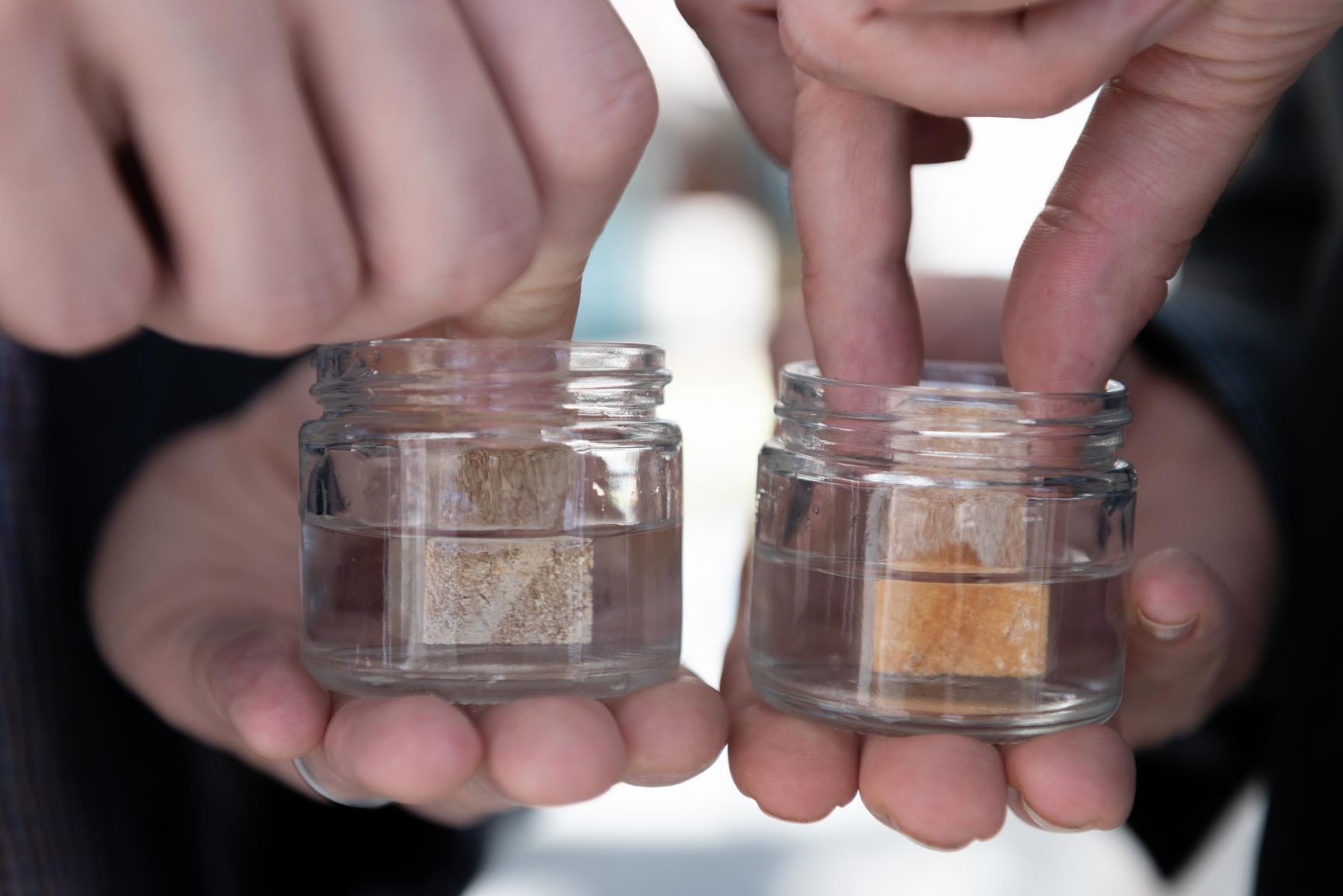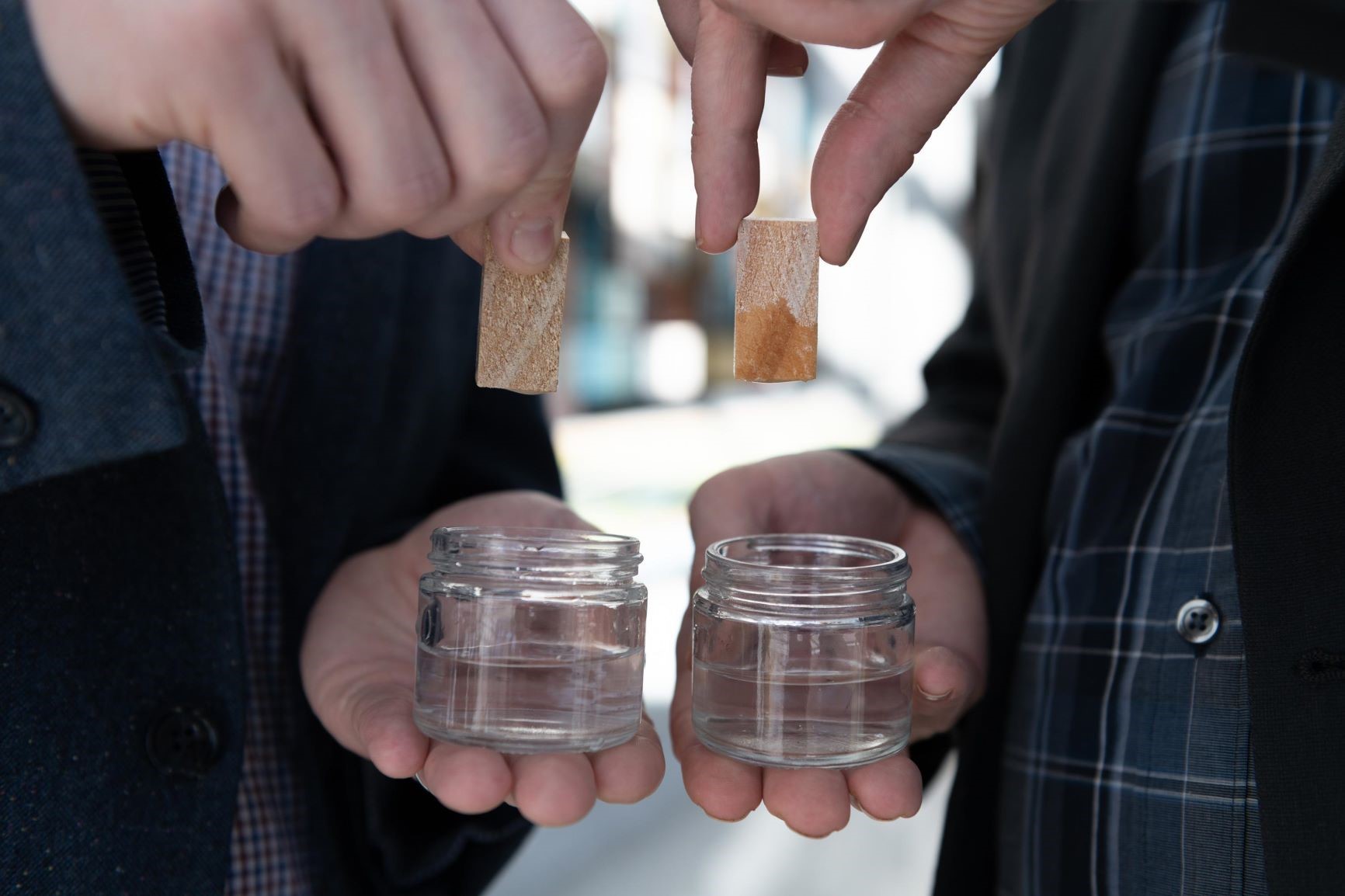Georgia Tech researchers have developed a vapor-phase processing method that makes wood products water repellent, fungal resistant, and more thermally insulating. The method involves using an atomic layer deposition (ALD) technique to apply a thin coating of metal oxide throughout the entire cellular structure of the wood.
The method is an alternative to conventional pressure treatment processes, which involve placing lumber inside a pressurized, watertight tank and forcing chemical preservatives into the wood to protect against rot and mold. The Georgia Tech method uses a single-cycle ALD process to ensure deep penetration of the coating within the wood product. The result is wood that sheds water from its surface and resists absorbing water even when submerged. Because the process requires a single exposure to precursors, it is potentially scalable for commodity product manufacturing.
- Water repellant: Manages moisture content by facilitating deep penetration and coating of metal oxide throughout the wood structure
- Fungal resistant: Withstands mold growth in humid and moist environments
- Thermally insulating: Reduces thermal bridging in wood studs used in building materials
- Environmentally friendly: Reduces use of toxic chemicals typical of pressure treatment processes
- Construction industry
ALD is a vapor-phase technique used to deposit thin films onto a substrate. Frequently used in manufacturing microelectronics for computers and cell phones, ALD is being explored for new applications in commodity products such as wood. Like pressure treatments, the Georgia Tech-developed process is performed in an airtight chamber. However, in this case, the chamber is at low rather than high pressures to help the gas molecules permeate the entire wood structure.


Treated (left) and untreated (right) pieces of lumber after being submerged in water. The treated wood resists absorbing water while the untreated wood readily soaks it up, causing a color change in seconds.
